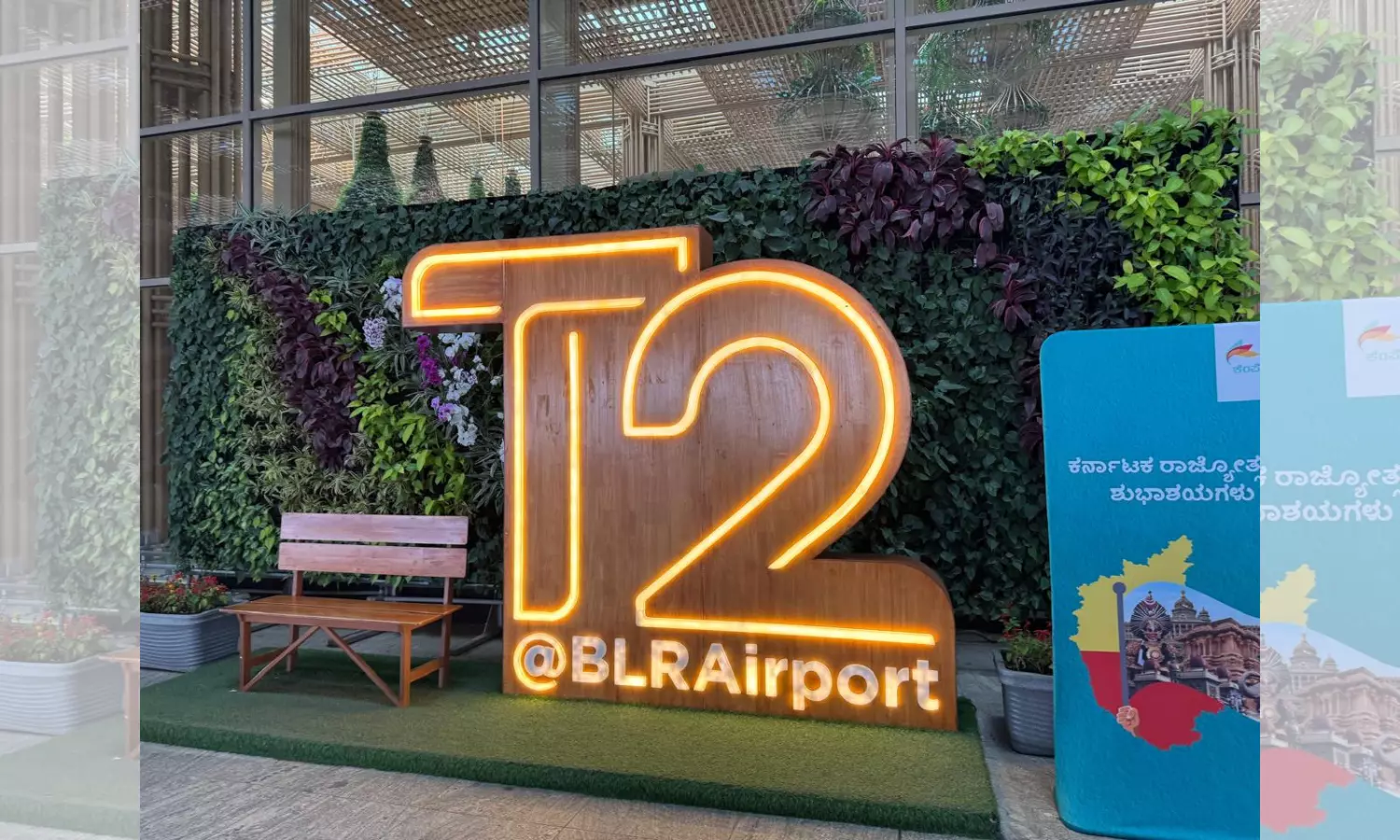BLR Airport Terminal 2 Restores Bengaluru’s Garden City Glory

Bengaluru’s Green Gateway: BLR Airport’s Terminal 2 Sets Global Benchmark in Sustainability (Photo by arrangement)
When you step into Terminal 2 of Kempegowda International Airport Bengaluru (BLR Airport), you are immediately struck by the stunning green walls and vibrant plants that seem to bring the outdoors inside. This breathtaking space is the result of a collaborative effort between Patrick Blanc, a renowned French botanist and artist, and Hari Marar, the Managing Director and CEO of Bangalore International Airport Limited (BIAL). The airport’s commitment to sustainability and greenery has transformed it into a haven, earning it the title of “Airport in a Garden.”
Patrick Blanc’s fascination for vertical gardens began when he was just 13 years old. “I started experimenting with aquariums and aquatic plants,” he recounts. “I realized that plants could thrive in unusual environments, and that sparked my interest in vertical gardens.” This innovative approach has transformed the airport into a haven of green.
Mr Hari Marar and Patrick Blanc (Photo by arrangement)
The green wall—Tiger Wings, a new installation is a marvel of engineering and design. Comprising various species of plants, it reflects Patrick Blanc’s innovative vision.
The airport’s orientation garden, located post-security, is designed to calm travellers before they proceed to their gates “Travel is a stressful experience. Nature has this brilliant impact on people. It calms you down and makes you relaxed almost instantly,” says Hari Marar.
BIAL’s vision was to create a space that would not only reduce travel anxiety, but also uphold Bengaluru’s reputation as a garden city. The airport’s orientation garden, featuring 850-year-old yuccas and 650-year-old olive trees, is designed to calm travellers before they proceed to their gates.
“Bangalore has always had the moniker of being a garden city. And we decided that the airport that we build here must therefore become an airport in the long run that reflects this identity of the city of Bangalore as a garden city. Airports are portals through which the world interacts with the region. But also ones through which the region interacts with the world. And in creating this airport or a terminal in a garden, we also tried to make sure that balance is finally maintained. Which means the best of local plant species, native species are available here, which can be experienced by people who are travelling into the region. Similarly, for people who haven't had the privilege of having travelled abroad, we have got the finest species from around the world. At terminal 2, we have plant species from Africa, from South America, from North America, from Australia, from Europe,” says Marar.
This airport’s commitment to sustainability is evident everywhere. From the recycled water used for irrigation to the carefully selected plant species, every detail has been thoughtfully considered. “We have adopted 180 species of rare, endangered, and threatened plants,” Hari Marar explains, adding, “Our airport has become a biodiversity hotspot, preserving these species for future generations.” The airport’s water harvesting program replenishes 2.36 times the amount of water consumed, making it water positive. Additionally, BIAL has achieved ACI’s carbon accreditation of level 5, a feat few airports globally have accomplished.
The airport’s use of IOT technology ensures efficient water management. Sensors measure root zone temperature, relative humidity, and micro-dose water exactly based on what each plant needs. This innovative approach has reduced water consumption significantly.
Beyond the impressive statistics, it’s the human touch that makes this airport truly special. The landscaping team works tirelessly to maintain the lush surroundings. The airport’s commitment to sustainability has also had a positive impact on the local community. By adopting sustainable practices, BIAL has reduced its carbon footprint and created a healthier environment for travellers and employees alike.
As travellers move around the terminal, they are surrounded by soothing sounds and sights. “We have designed the airport to be a calming experience,” Hari Marar says. “From the natural light to the green walls, every detail is intended to reduce stress and promote relaxation.”
Bengaluru’s Terminal 2 is more than just a travel hub – it’s an immersive experience that combines art, nature, and innovation. As Patrick Blanc aptly puts it, “Nature has the power to transform any space. This airport is a shining example of what can be achieved when innovation meets sustainability.”
The airport’s green belt outside the building, features over 3,600 species of plants and reflects BIAL’s commitment to preserving the natural world. Rare, endangered, and threatened species from the Eastern and Western Ghats have found a safe home here.
“This area will remain untouched forever. So, we thought the Airport Greenbelt is the place where you can have this rare, endangered, and threatened species,” says a landscape official.
As Bengaluru’s Kempegowda International Airport continues to push the boundaries of sustainability and innovation, it sets a new standard for airports worldwide. This “Airport in a Garden” is a beacon of hope for a greener, more sustainable future.
“We are committed to making our airport a model for sustainable development. We want to show that airports can be more than just transit points; they can be hubs for sustainability and innovation,” signs off Hari Marar.
( Source : Deccan Chronicle )
Next Story

